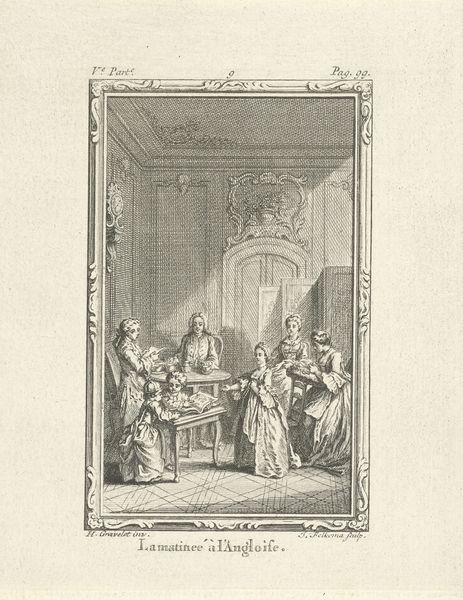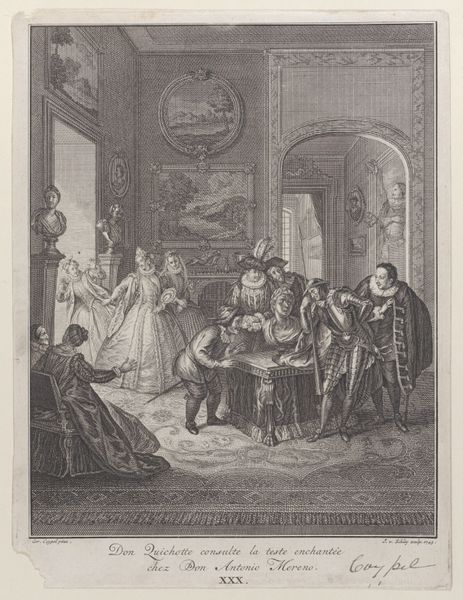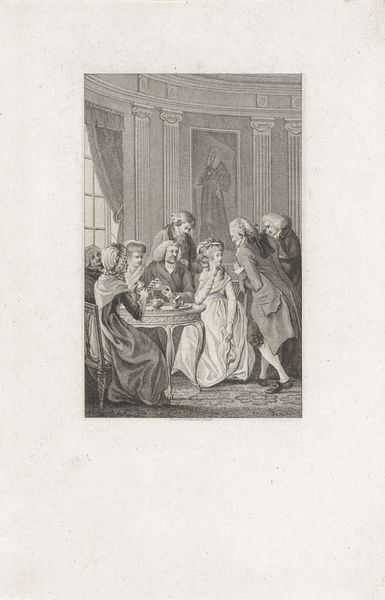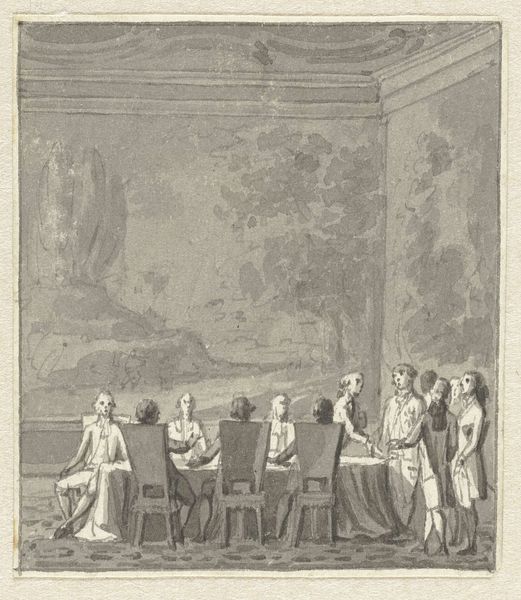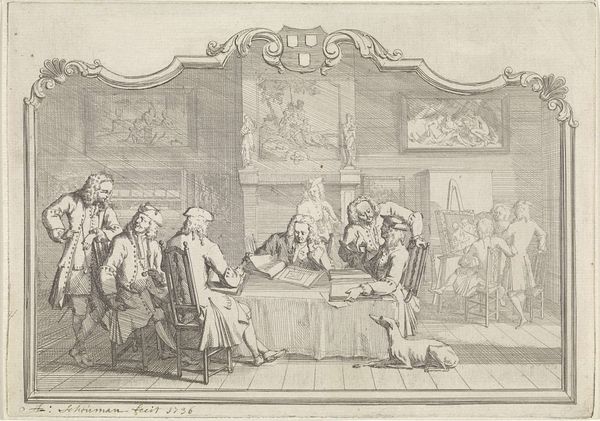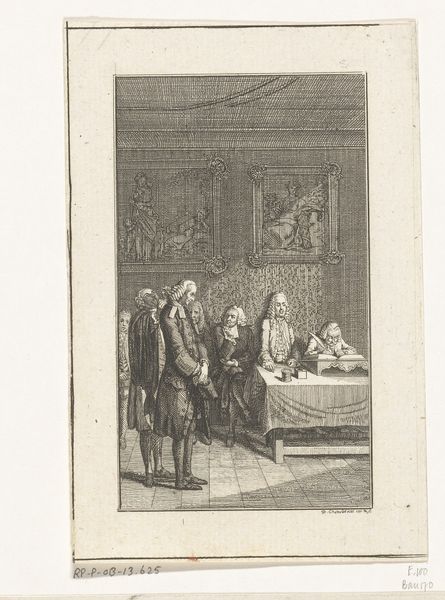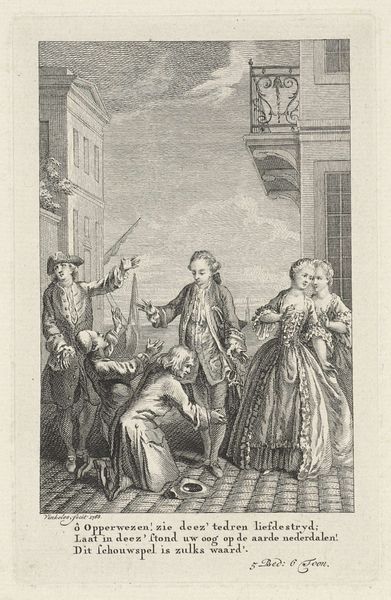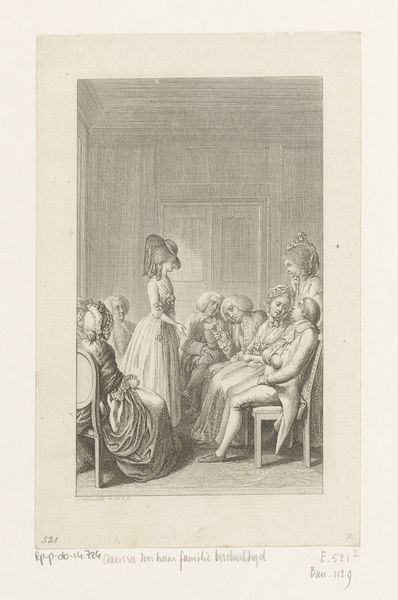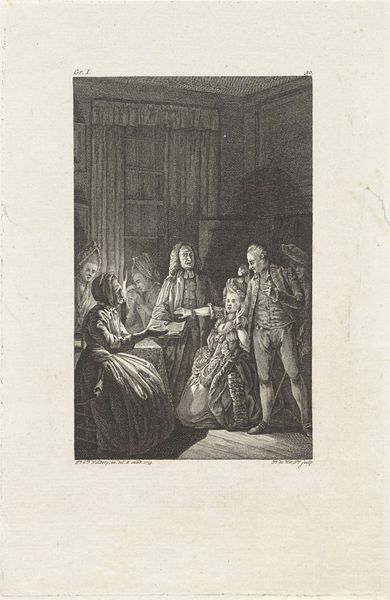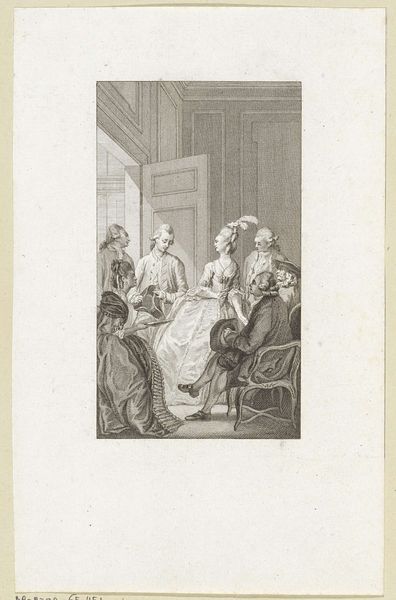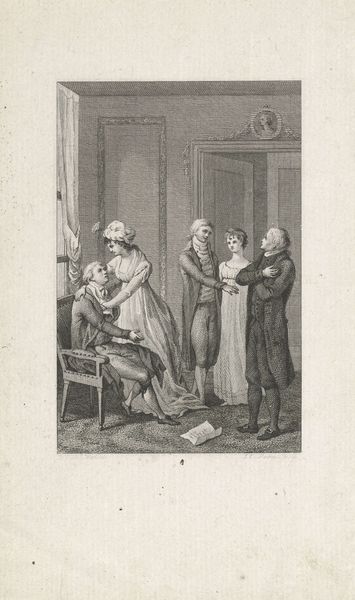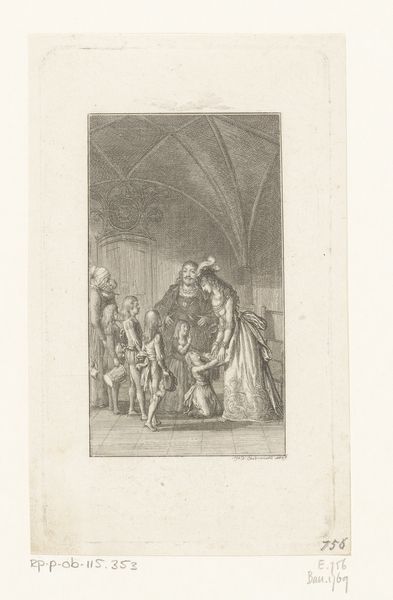
Dimensions: height 424 mm, width 304 mm
Copyright: Rijks Museum: Open Domain
Editor: So, this is "De Stiefmoer," or "The Stepmother," an engraving made by Jacob Houbraken between 1760 and 1780. It shows a large family scene. What strikes me is the very theatrical presentation and the implied narrative. How do you interpret this work, especially considering its title? Curator: Well, given the title and the era, we need to consider the precarious position of women, particularly widows and stepmothers, in 18th-century Dutch society. What appears at first glance as a domestic scene likely encodes complex power dynamics. Look at the composition—how might it reflect patriarchal structures? Editor: I see what you mean. Everyone is gathered around the table, seemingly in a familial embrace, but the stepmother figure, if that's who she is, appears somewhat isolated despite being at the center. The body language of the others doesn't scream warmth toward her. Curator: Exactly. And what about the setting? A bourgeois interior, suggesting a certain social standing, but the stepmother's role within this space is clearly contested. How do the surrounding details, the objects, and the presence of the children, reinforce or challenge societal expectations? Editor: I notice the monkey near the child...Is that meant to be symbolic? Like the chaos that the stepmother might represent disrupting an established order? Curator: Possibly. The artist might be using the animal as a way to critique social norms through allegory. It's about unpacking how women, especially those who stepped into existing family structures, navigated their identities within a rigid social landscape. Ultimately, it encourages us to consider how art can mirror and critique gender roles. Editor: This has definitely changed my perspective on what seemed like a simple domestic scene. Thanks for unpacking the cultural context. Curator: It’s fascinating how much we can glean about past social tensions through careful reading of these seemingly simple images. It also holds relevance in a world still struggling with issues of inequality and female representation.
Comments
No comments
Be the first to comment and join the conversation on the ultimate creative platform.
